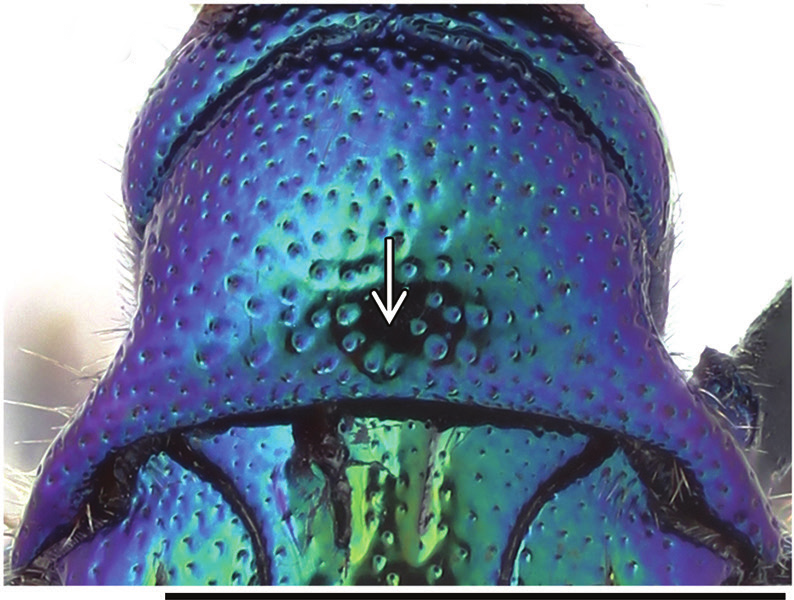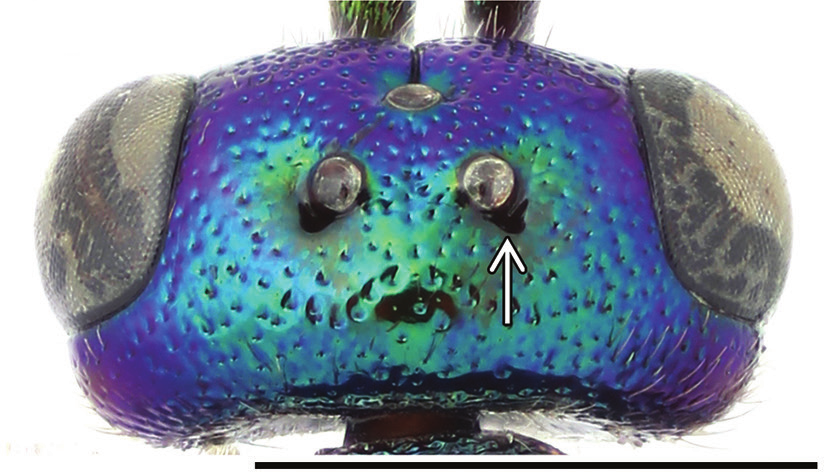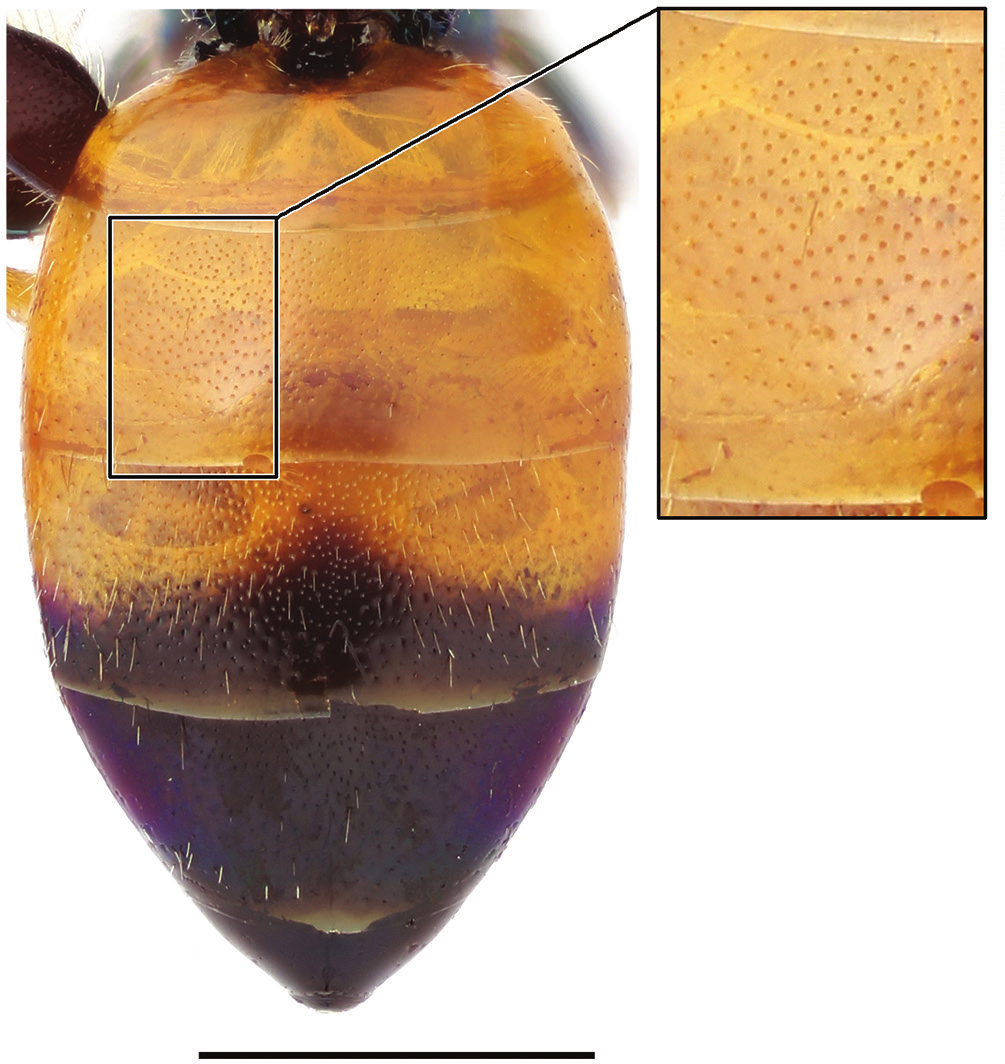Cleptes nitidulus
- Innhold
- Diagnosis
- Distribution
- Biology
Diagnosis
Figure 13
Pronotum, dorsal view: C. nitidulus ♂.
Figure 14
Head, dorsal view (arrow indicating postocellar fovea): C. nitidulus ♂
Figure 16
Metasoma, dorsal view: C. nitidulus ♂
Length 5–7 mm.
Both sexes differ from C. semiauratus by not having a foveate furrow posteriorly on the pronotum (Fig. 13). The female also differs from C. semiauratus by its black head and mesoscutum, non-metallic yellow or orange pronotum, mostly metallic blue mesoscutellum, metanotum and propodeum, and non-metallic black apex of the metasoma. As opposed to the female, the head and mesosoma of the male are entirely metallic green and the apex of the metasoma has faint metallic reflections laterally (Fig. 16). Both sexes differ from C. semicyaneus by having pale brown or yellow (not dark brown) legs, denser punctation on the tergites (Fig. 16) and deep postocellar foveae on the vertex (Fig. 14).
Distribution
Denmark, Estonia, Finland, Latvia, Sweden. Rare.
West Palearctic: Europe and Turkey (Linsenmaier 1959), records from China are erroneous (Rosa et al. 2014).
Be aware that the records present in the GBIF map may be misleading for some countries due to unrevised data sets or missing information.
GBIF Taxon: Cleptes nitidulus (Fabricius, 1804)Biology
Habitat: sparsely vegetated sandy areas, such as dry meadows and dunes (Morgan 1984). Occasionally found on flowers of Apiaceae (Heinrich 1964).
Flight period: June to August.
Host: Caliroa cerasi (Linnaeus) and Euura ribesii (Scopoli) (Tenthredinidae) (Dahlbom 1854, Morgan 1984).


